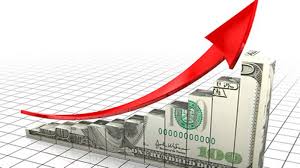
I accessed Chatpts here.
In the last days of July 2025, the dollar exceeded $ 1,300 in all its variants and the Argentine economy showed signs of strong volatility. From the daily left and the analysis of the PTS, these are the 5 main keys that explain this jump of the dollar at the current situation:
1. Failure of the “Supercenta” and excess pesos in the economy
The Government, headed by Minister Caputo, tried to stop the increase of the dollar with a high interest rates policy, carrying the LECAP to yields between 60% and 65% per year. However, not even with these “suits” managed to contain the demand for dollars. The background reason is that, after disarming the Lefi in mid -July, it failed to absorb about 10 billion pesos, which were loose and turned to the dollar largely. Thus, the rates policy ended up being a patch that does not solve the underlying problem: the excess pesos in circulation and distrust of weight as a reserve of value.
2. Capital escape and disarmament of “Carry Trade”
In recent weeks, great international funds such as JP Morgan recommended to their customers out of positions in Argentine assets until after the elections. This accelerated the capital escape and the disarmament of speculative bets to the “Carry Trade” (enter pesos to take advantage of high rates and then return to the dollar). The result was an extra pressure on the exchange rate, in a context where capitals seek coverage in the face of electoral and economic uncertainty.
3. International reservations at critical levels
Despite the IMF disbursements and the World Bank, the net reserves of the Central Bank are still in negative terrain, around US $ 6,000 million. The IMF warned that the coverage of reserves is “inadequate” and that the economy remains exposed to external shocks. This structural weakness feeds the expectation of devaluation and the search for refuge in the dollar, especially when the end of the high season of agricultural currency settlement is approaching.
4. Current account deficit and debt payments
The current account deficit (more dollars come from those that enter) and the uncertainty about how the State will face the debt payments of 2026 and 2027 (which exceed US $ 30,000 million) are structural factors that press on the price of the dollar. To this is added the constant currency exit by the exchange delay, which widens the red balance of payments.
5. Intervention in the market for futures and devaluative expectations
The Central Bank is intervening strongly in the future dollar market, allocating millions of pesos to stop devaluation expectations. However, since mid -June the dollar rose 10% and futures contracts show that the market expects an even greater price for the end of the year. This intervention does not use dollars, but implies a fiscal risk and feeds distrust, since the government seems to be “kicking forward” the exchange adjustment.
Conclusion
The increase of the dollar in July 2025 is the result of a combination of structural and short -term factors: the inability of the government to absorb pesos, the capital escape, the weakness of the reserves, the external deficit and the generalized distrust in the economic direction. All this happens in a framework of growing political and social uncertainty, where the only realistic exit for workers is to reject the adjustment, payment of the debt and the IMF plan, and fight for a fundamental exit that puts the country’s resources at the service of the majorities.
****
And you, what would you ask Chatpts? I accessed here and ask your questions. You can also inquire about thousands of more topics of history, theory or politics.
Source: www.laizquierdadiario.com

